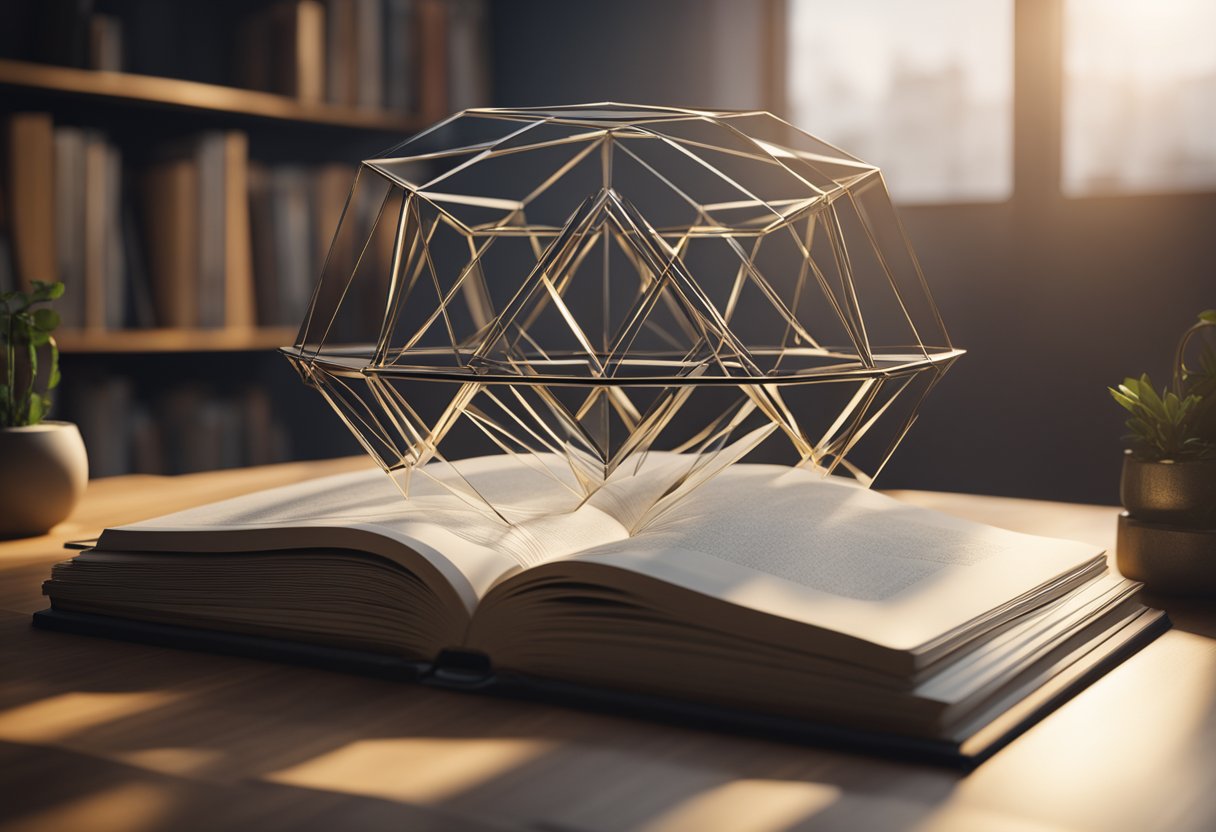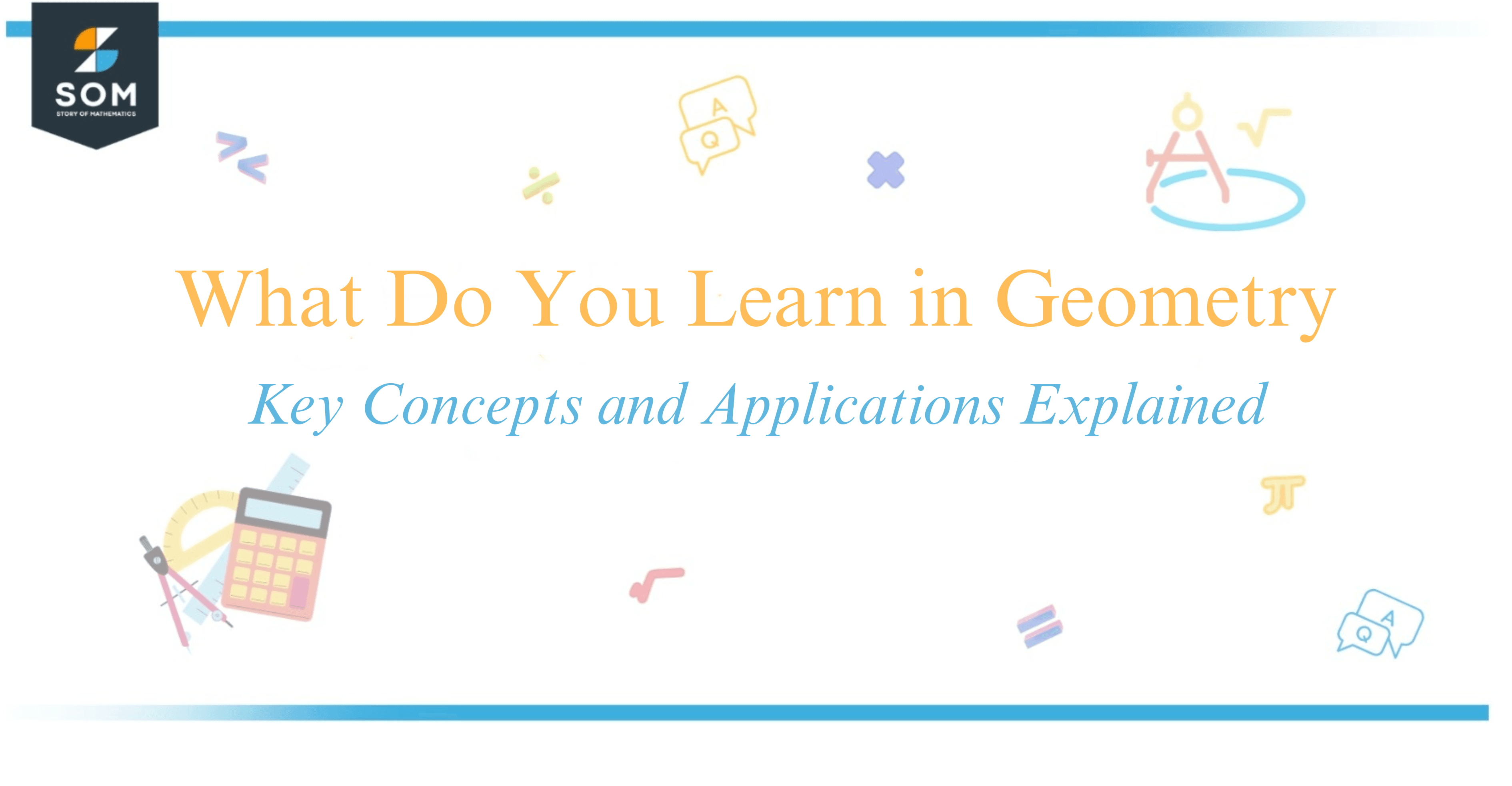JUMP TO TOPIC
Geometry is the branch of mathematics that engages with the properties and relationships of points, lines, shapes, and figures in both plane and space.
In studying geometry, I explore the fundamental building blocks of the physical world, unraveling how various figures are formed, interact, and can be measured.
It begins with the basics of understanding points and lines, the core components of all geometric shapes. As my knowledge expands, I learn to calculate angles and comprehend the intricate relationships between different geometric figures and the spaces they occupy.
The journey through geometry equips me with the ability to analyze two-dimensional and three-dimensional objects.
This involves working out how to calculate the area and perimeter of various shapes on a plane, such as squares and circles, as well as determining the surface area and volume of solid figures like spheres and pyramids.
Understanding geometry provides a foundation for excelling in numerous fields, from architecture and art to engineering and the sciences, where spatial reasoning is invaluable.
With each new geometric concept I master, I unlock a deeper appreciation for the mathematical underpinnings of the world around me. The study of geometry often leads to surprising revelations and a satisfying sense of logical clarity. Let’s discover the elegance of geometry together, where every shape tells a story and every formula reveals a secret of the universe.
What You Learn in Geometry
When I study geometry, I begin by understanding the very basics: points, lines, and planes. A point is a precise location in space, represented by a dot and having no dimension.

A line is a collection of points extending indefinitely in both directions. It’s one-dimensional and described by a line equation, such as ( y = mx + b ), where ( m ) is the slope and ( b ) is the y-intercept. Planes are two-dimensional surfaces that extend indefinitely in all directions.
I learn about various shapes, both two-dimensional and three-dimensional. These include circles, squares, triangles, and other polygons.
In the case of circles, I explore concepts such as radius, diameter, and circumference. For polygons, I study the properties of different types, such as the equilateral triangle, where all sides and angles are equal.
Angles are a fundamental part of geometry as well. An angle is formed by two rays with a common endpoint, known as the vertex. Angles are measured in degrees, and different types include acute, obtuse, and right angles.
| Shape | Properties |
|---|---|
| Circle | All points are equidistant from the center. |
| Square | Four equal sides and four right angles. |
| Triangle | Three sides and three angles that sum up to 180 degrees. |
Understanding these elements helps me solve problems related to area, volume, and perimeter. I also learned to use various theorems and postulates to prove the relationships between different geometrical figures, which is a key skill in geometry.
Throughout my study of geometry, I improve my spatial reasoning and problem-solving abilities, laying a solid foundation for more advanced mathematical concepts.
Properties and Measurements
In geometry, I learned that properties are the characteristics that define different geometric shapes and figures. These include aspects like size, length, and distance which are foundational to understanding the scope of a shape.
When dealing with circles, I measure the circumference of the circle – the total distance around the circle – and the area – the space contained within it. The formula for the circumference is $C = 2\pi r $, where ( r ) is the radius, and the area is calculated by $ A = \pi r^2 $.
Moving to three-dimensional objects like cylinders, spheres, and cubes, I explore volume – the amount of space occupied by the object.
For a cylinder, the volume formula is $V = \pi r^2 h$, where ( h ) is the height. For spheres, the volume is given by $ V = \frac{4}{3}\pi r^3 $, and for cubes, the volume is simply $V = s^3 $, with ( s ) being the length of an edge.
Solids can also be compared by examining if they are congruent (identical in form and size) or similar (same shape, different sizes). Congruence and similarity are key concepts when discussing the properties of shapes and ensuring precise measurements.
Moreover, I use radians as a way to measure angles in a circle. One full rotation around a circle is $ 2\pi $ radians, which equates to 360 degrees. This is particularly useful in understanding the properties and measurements of angles within different geometric contexts.
| Shape | Property | Measurement |
|---|---|---|
| Circle | Circumference | $C = 2\pi r$ |
| Circle | Area | $A = \pi r^2 $ |
| Cylinder | Volume | $V = \pi r^2 h $ |
| Sphere | Volume | $ V = \frac{4}{3}\pi r^3 $ |
| Cube | Volume | $V = s^3$ |
| Any Shape | Angle Measure | radians |
Understanding these properties and measurements is vital for accurately describing and analyzing the geometrical world around me.
Geometric Transformations
In geometry, transformations are operations that alter the position, size, and shape of figures in a plane. There are four main types of transformations which are crucial to understand:
- Translation: This moves every point of a shape the same distance in the same direction. For instance, if I translate a shape 5 units to the right, every point of the shape moves 5 units to the right. Mathematically, if a point is at $(x, y)$, after translation, it would be at $(x+5, y)$.
- Rotation: This turns a shape about a fixed point, known as the center of rotation, through a specified angle and direction, such as 90° clockwise. If I rotate a point $(x, y)$ about the origin $(0,0)$ by 90° clockwise, the point’s new position would be $(y, -x)$.
- Reflection: This flips a shape over a line, known as the axis of reflection, creating a mirror image. For example, reflecting a point $(x, y)$ over the y-axis changes its position to $(-x, y)$.
- Symmetry: Present in objects that are balanced and proportionate, which can be observed when reflection or rotation produces the same shape.
I find that these transformations can be combined to create intricate patterns and tessellations, exhibiting the beauty of mathematical precision.
| Transformation | Description | Example on Point $(x, y)$ |
|---|---|---|
| Translation | Slides a shape in the plane | $(x + \text{distance}, y)$ |
| Rotation | Turns a shape around a fixed point | $(y, -x)$ for 90° clockwise rotation |
| Reflection | Flips a shape over a line | $(-x, y)$ across the y-axis |
| Symmetry | Mirrors a shape along an axis or center | Shape is unaltered after transformation |
Through my study of geometric transformations, I’ve learned how to manipulate the qualities of a shape, such as its position on the coordinate plane, without altering its intrinsic properties. It’s fascinating to see how translations, reflections, rotations, and identifying lines of symmetry reveal the inherent structure and patterns in planes of geometry.
Application of Geometry
Geometry is not just about theoretical concepts; it permeates many aspects of my life in both obvious and subtle ways. In art, geometry is fundamental for creating perspective and symmetry.
Artists use geometric principles to bring balance and proportion to their work, often employing tools like the compass and ruler to draw precise shapes and angles.
The field of architecture is deeply rooted in geometric concepts. From ancient Greek structures to modern skyscrapers, geometry helps architects design buildings that are not only aesthetically pleasing but also structurally sound.
The careful calculation of angles and reinforcement through geometric shapes ensures the stability and durability of constructions.
In engineering, I see that geometry is essential in designing and testing various types of machinery and structures. Engineers apply geometric principles to predict the behavior of materials under different forces, optimizing design efficiency.
When it comes to practical tools like the protractor, it’s indispensable for measuring precise angles. Whether I am analyzing a structure or planning a piece of art, such simple tools are my everyday companions for accuracy.
The legacy of Euclid and his work, such as “Elements”, still influences contemporary geometry teaching and learning, especially on educational platforms like Khan Academy which utilize web filters to ensure safe browsing on domains such as kastatic.org and kasandbox.org.
Here is a brief list of how geometry presents itself in various fields:
- Art: Creating perspective, symmetry, and balance
- Architecture: Designing aesthetically pleasing and structurally sound buildings
- Engineering: Designing machinery and predicting material behavior
By grappling with geometry, I gain not just the ability to work with shapes and figures but also the skill to apply mathematical reasoning to diverse real-world problems.
Conclusion
Through the course of my study in geometry, I’ve come to appreciate its role in developing a robust foundation for analytical thinking.
At its heart, geometry deals with shapes, sizes, relative positions of figures, and the properties of space. I learned that the knowledge gained here is not just academic; it has practical applications in everyday life, from architecture to engineering.
Working through problems, I honed my skills in deductive reasoning and logical thinking. These skills are vital and transferable to various domains beyond mathematics.
Geometry helped me understand the world around me in a structured way, making sense of space and form. Engaging with geometry also improved my problem-solving abilities.
For instance, calculating the area of a triangle ($A = \frac{1}{2}bh$ where $b$ is base, $h$ is the height) or finding the volume of a cylinder ($V = \pi r^{2}h$) are essential skills that can be applied in numerous scenarios.
My journey through geometry introduced me to the elegance of mathematical proof, the concept of congruence, similarity, and the properties of angles and lines.
In summary, geometry is not just about mastering the theoretical components; it’s about applying this knowledge to see and interact with the physical world more effectively.
I benefited greatly from the study of geometry and will carry the skills and insight it has provided me with for the rest of my life.

